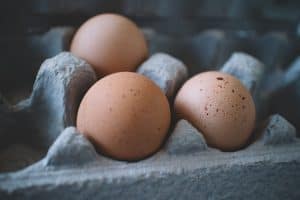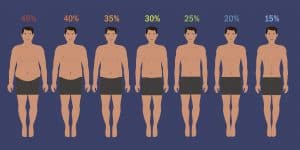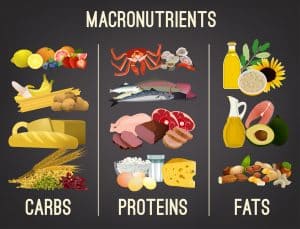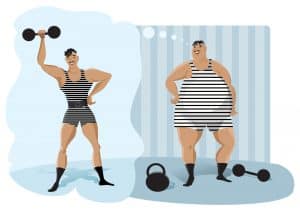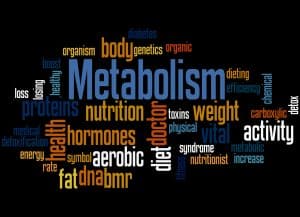Natural or enhanced?
There is a big difference.
You’ve probably seen a professional overweight bodybuilder in the off-season carrying a lot of fat.
And 3 months later ….
He or she is stage-ready!
Ripped, shredded to the bone at 10 – 8% body fat!
If you are a natural lifter or bodybuilder, chances are you won’t even come close to that look in that amount of time.
12 – 16 weeks are over, but you’re still not very satisfied with that floppy look of your lower abs.
Or the few inches remaining on your love handles.
And you start to doubt yourself and wonder if it’s even possible to lose those stubborn pounds of body fat.
The good news is …
It is absolutely doable for the average endomorph body type.
So in this post, I’ll share with you 5 tips to shred those remaining stubborn pounds.
5 Tips to lose stubborn body fat Naturally.
Here are simple 5 tips to help you lose stubborn body fat if you’re natural.
1
Track your calories in the last few weeks.
Tracking is everything!
Many lifters go easy on tracking calories after they see great progress a few months into their diet journey.
The thing is that when you hit a new low body fat percentage or a new bodyweight, you need to recalculate your new caloric intake.
This means, new TDEE (total daily energy expenditure), a new 15-20% reduction of that TDEE, and new macros!
As an example:
Assuming your TDEE is 3000 calories, and you cut your intake by 20% or 600 calories.
That’s 2400 calories per day.
6 weeks later, you lost 9-10 pounds (about 1.5 pounds/week).
At this point, you can’t continue consuming the same 2400 calories per day.
Calculate your new TDEE and reduce that number by 20% to reach a new deficit.
Use this calculator to find out your TDEE.
If 20% reduction is too much, try 15% or even 10% reduction.
Keep adjusting your new calorie intake every 2-4 weeks, especially in the last few weeks.
Track your calories and measure your food. Do not rely on eyeballs.
Be precise. Be patient, especially if you’re natural.
2
Yes, Nutrition timing plays a role!
We are big believers in the role of carbohydrates in building or maintaining lean muscle mass.
If you want to lose the stubborn last few pounds of body fat without losing muscle, motivation, or feeling tired during the workout …
Focus your carbohydrate intake around the workout: pre-and post-workout.
Your recovery will become much faster and more efficient than if you did not eat carbs in the pre-or post-workout meals.
The main reason is that carbohydrate intake increases insulin sensitivity. Insulin is an anabolic hormone that breaks down carbohydrates into glucose in the blood and transports nutrients into the muscle cell’s membrane.
When you time your nutrition to consume carbohydrates (and protein of course) around the workout, the body will have readily available glucose and amino acids to repair the torn down muscle fibers. A process called muscle protein synthesis.
The opposite of this process is muscle protein breakdown. It occurs (and accelerates) when the muscle uses its own fibers (that are made up of amino acids) as a source of energy when glucose is not available.
Remember, preserving your muscle mass while losing body fat will prevent a floppy and flat physique.
3
Be More NEAT
Non-Exercise Activity Thermogenesis or NEAT: is the energy expenditure when doing activities other than working out, sleeping, and eating.
NEAT is a significant percentage of the TDEE.
Working out constitutes about 45 to 90 minutes per day. That’s an average of 6.5 hours out of 168 hours in the week!
Or less than 4%!!
That’s why exercising itself, without caloric deficit, does not burn fat.
Increasing your daily activities outside the gym will help you lose body fat, especially the stubborn last few pounds.
Go for extended walks, perform the office work standing as opposed to sitting (which burns an extra 70 calories in one hour), or go shopping in person instead of ordering online.
Just be more active!
4
Train more intensity and frequently but with less volume!
Increasing training frequency is a great way to increase the NEAT, as we mentioned in the previous point.
Doing high volume is good for muscle hypertrophy. But if you’re on a caloric deficit?
Not so much.
High volume training (high number of sets and repetitions) increases cortisol levels.
Cortisol is the stress hormone. It is catabolic!
Elevated levels of cortisol contribute to Leptin resistance. Leptin is the craving hormone produced by the fat cells.
Less leptin leads to sugar and carbs-cravings!
This is why you feel extra hungry on the days you don’t workout.
Instead of adding more stress to your body by increasing the training volume, increase the training frequency.
For example, you could train 5 times a week with less volume instead of 3 times a week with excessive volume.
Intensity is also important. As a recommendation: take the last set of each exercise to failure and 1 or 2 sets to beyond failure in the entire workout.
Failure is defined as the point where you can’t do any more reps with the correct form in the set.
Any repetition after that is called beyond failure.
Remember, you don’t have the gear that the enhanced bodybuilders access in order to recover fast.
5
Rest and Adequate Sleep.
This might sound like a counterintuitive tip.
I’m not suggesting that you become a couch potato!
Many studies have shown that less sleep leads to an increase in Ghrelin.
Ghrelin is the hunger hormone released by the stomach and causes overeating.
Less sleep also causes a decrease in Leptin leading to overeating!
Finally, less sleep causes an increase in the cortisol hormone.
To get a good and enough sleep, make sure you turn the electronics off, use blackout curtains to make the room dark, adjust the room temperature to around 65 degrees, and relax in bed 30 minutes before sleep.




